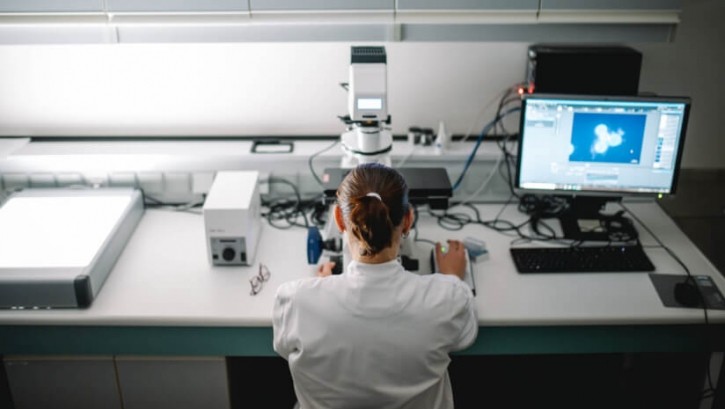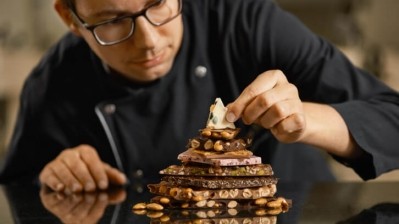Smart technology
Five ways AI is transforming the confectionery sector

Artificial intelligence (AI) is the science of making machines like computers and production equipment think like humans and it is transforming manufacturing. Indeed, AI in confectionery is expected to grow 25% every year over the next five years, Gitnux Market Data Report 2024 says.
Supporting various parts of the confectionery business and consumer experience, AI is becoming a bigger part of confectionery brands' and manufacturers’ strategies and operations. From marketing, formulation innovation and customer service to supply chain management and automation, AI has the power to ease business demands and meet shoppers’ expectations.
As highlighted at the 2024 National Confectioners Association State of the Industry Conference, AI-led support can help companies navigate the current socioeconomic climate, including rising raw material prices. Similarly AI can help consumers too: a recent Accenture survey showed almost half (45%) of sweet shoppers are potentially open to using AI to help them select confectionery after consumers reported finding it much more difficult to choose these than regular groceries.
Here are five other ways machine learning is disrupting the market.
1. Personalisation, novel storytelling and going generative
AI is behind many of the leading confectionery brand’s personalised marketing and interactive campaigns. AI’s edgier sister, generative AI, gives brands more opportunities to engage with shoppers and immerse them into their confectionery worlds.
Gen AI is big in content creation. It describes algorithms, like ChatGPT, that can create material such as writing, audio, images, and videos. Gen AI burst onto the scene in 2022. In less than two years, McKinsey research indicates that gen AI applications will add up to $4.4 trillion (€4.1 trillion) to the global economy every year.
Using gen AI for interactive campaigns allows brands to maximise creativity and connect with consumers in new and novel ways. Producing personalised marketing across multiple digital platforms means consumers receive content tailored to their preferences. Gen AI can help brands vary their content to deliver exciting stories that reflect changing brand narratives and resonate with consumers.
In May, Starburst launched its ‘Different Every Time’ campaign. The campaign uses gen AI to show consumers the 479 million ways to enjoy eating a 12-pack of original Starburst. The brand’s first campaign in 12 years combines gen AI with traditional marketing channels like TV and other novel initiatives, like using augmented reality (AR) lenses on Snapchat and creating flavour-inspired music experiences on Spotify.
Hershey rolled out its custom AI campaign ahead of one of its biggest seasonal sales opportunities: halloween. The chocolate giant built a custom algorithm that fed sales data to its media algorithms. Hershey then combined AI with increased advertising spending. It delivered more ads in real-time in regions where candy wasn’t selling (under its 85% national average) and fewer to locations where it already was. Combining AI and ad marketing in this way increased sales in these areas by 90%.
KitKat has used AI to fuel its long-standing ‘have a break’ marketing campaign. In January 2024, the brand launched its AI campaign video. Targeting the Canadian market, KitKat encourages consumers to take breaks themselves and put a break on AI tools, communicating how taking breaks in our everyday lives can create better results.
To capitalise on Europe’s biggest sports tournament, the UEFA Cup, Snickers unveiled its José Mourinho AI clone. Fans were asked to send their biggest mistakes to the artificial version of the football manager who would then coach them out of their ‘own goals’ using AI.
2. Taste innovation
AI shapes flavour profiles, too, predicting what consumers and markets may want from sweet treats’ taste profiles. Proving a valuable tool in the R&D process, AI helps to remove the trial-and-error of flavour experiments and the risk of disappointing product launches. In addition to understanding taste trends, brands are using AI to develop new products and reveal what taste testers really think about them.
Confectionery spice manufacturer Ofi uses AI to anticipate the next regional cocoa flavours set to make a big impact around the globe. Ofi uses predictive analytics to gauge the big cocoa trends. The brand scanned e-commerce websites, online recipes and restaurant menus to understand upcoming or niche trends before they hit the mainstream industry.
Ofi found that Asian flavours, including dragon fruit, sesame, yuzu, lychee, and miso, are on the cusp of mainstream popularity in the US and Europe. Meanwhile, western flavours like butterscotch, marshmallow, salted caramel and cookies and cream appeal to consumers in South Asian countries like Indonesia and India.
Maltesers has previously teamed up with Google Cloud’s AI kitchen to develop a new dessert. The search engine giant trained a new machine learning (ML) model to create cookies, cakes, scones, traybake recipes and hybrid options. Model training and baking experiments gave the brand a dataset of recipes to create new flavour profiles. The end result was that Maltesers introduced a Marmite-infused buttercream.
3. Climate change goal progression

Approximately 30% of global greenhouse gas (GHG) emissions are linked to food and agriculture. Confectionery brands are implementing new AI-led strategies, processes and equipment to enhance the environmental friendliness of their manufacturing and contribute to the circular economy.
In February, Nestlé announced it was combining AI and data science to support regenerative systems. Launching its Nestlé Institute of Agricultural Sciences, the company is exploring how agricultural science can help farmers improve Nestlé ingredients’ environmental footprint. The company uses AI in conventional classical plant breeding to help choose and discover plant varieties with high yield, drought- and disease-resistant options.
The World Economic Forum says that if 15% to 25% of farms implement precision agriculture techniques, GHG emissions could drop by 10%, water use could be lowered by 20%, and farming yields could increase by 15%.
AI is helping to maximise traceability throughout the confectionery supply chain. Barry Callebaut is working with its cocoa supply chain to achieve complete transparency and traceability, such as disclosing its direct suppliers’ geolocation. Prioritising collaboration, the company has launched initiatives to transfer knowledge beyond its direct supply chain to its indirect one.
In June, Conagra Brands, which owns bakery-inspired cinnamon kettle corn brand Boomchickapop, teamed up with Microsoft on a two-day hackathon to create new automated product labelling procedures. Using AI, the brand hopes the new procedures will boost the accuracy of key information on product labels, improving traceability and quality assurance.
4. Automation in manufacturing
Around 30% of confectionery manufacturers use AI to optimise their supply chain logistics. AI complements manual processes in confectionery labs and factories to reduce inefficiencies, improve productivity and increase production volume. Retailers like Marks & Spencer, Ocado and Macy’s are also bringing AI into their strategies and supply chains to simplify operations and improve staff productivity.
Computer vision is a type of AI with significant potential in the confectionery and bakery industries, particularly when combined with robotics technology. The AI subset teaches machines to identify and interpret visual data. The tech can, therefore, check quality control, spotting imperfections and inconsistencies in colour, texture and product dimensions.
AI also features in confectionery packaging trends. AI specialist BKT is working with brands to swap generic packaging for novel creations that stand out on the shelves. BKT uses advanced AI algorithms to produce visually stunning boxboards and presentation boxes for sweet brands.
5. Automating customer service
Advancing AI tech also supports brands’ customer service through smart decision-making. Nestlé has launched its ‘cookie coach’ chatbot to help US consumers perfect the chocolate chip cookie. After calls to its helpline peaked during the Covid-19 pandemic, Nestlé introduced its AI tool to troubleshoot cookie-baking questions. The AI-powered avatar, ‘cookie coach,’ uses natural language processing to understand and answer written and spoken queries.











